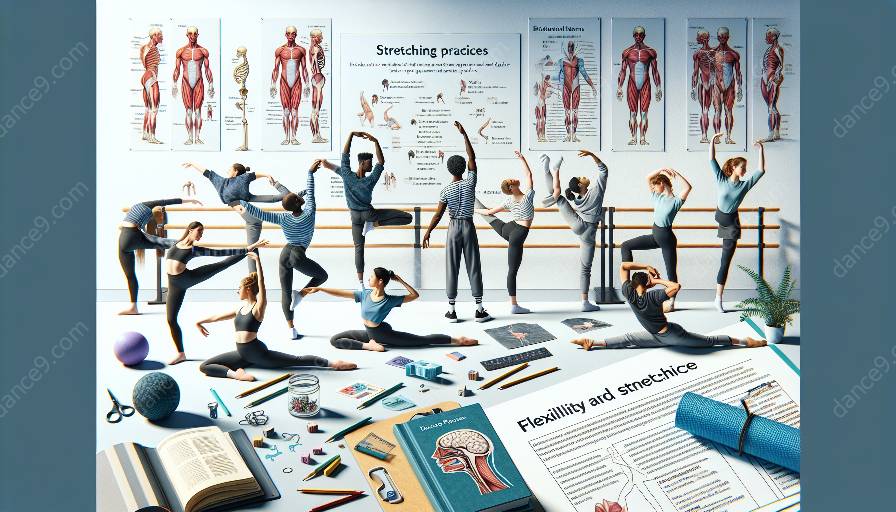Dance is a physically demanding art form that requires a high degree of flexibility. Dancers must be able to move their bodies through a wide range of motion while maintaining control and balance. In this article, we will explore the physiology of flexibility in dancers and its impact on their physical and mental health.
The Importance of Flexibility for Dancers
Flexibility is the ability of a joint to move freely through its full range of motion. For dancers, flexibility is essential for achieving the various positions and movements required in different dance styles. A high level of flexibility enables dancers to perform with grace, fluidity, and precision.
Improved flexibility also reduces the risk of dance-related injuries, as it allows dancers to move more freely and with better alignment. It can also enhance performance quality and help dancers execute movements with greater ease and control, leading to a more polished and professional appearance.
The Physiology of Flexibility
Flexibility is determined by the extensibility of the muscles, tendons, ligaments, and other connective tissues around a joint. These tissues can be stretched and lengthened through regular and consistent training, which includes targeted stretching exercises and dynamic movements.
Muscles play a crucial role in the maintenance of flexibility. When a muscle is stretched, the muscle spindles, which are sensory receptors within the muscle, send signals to the nervous system to initiate the stretch reflex. This reflex causes the muscle to contract in response to the stretch, preventing overextension and protecting the muscle from injury.
Over time, consistent stretching can lengthen the muscle fibers and decrease the resistance to stretching, allowing the muscles to achieve a greater range of motion. This process also enhances the elasticity of the connective tissues, such as tendons and ligaments, which can contribute to overall flexibility.
Flexibility and Stretching for Dancers
For dancers, a comprehensive stretching routine is essential for maintaining and improving flexibility. Static stretching, dynamic stretching, and proprioceptive neuromuscular facilitation (PNF) stretching are commonly used techniques to enhance flexibility and range of motion in dancers.
Static stretching involves holding a stretch position for a prolonged period, typically 20-30 seconds, to lengthen the muscles and improve flexibility. Dynamic stretching uses controlled, repetitive movements to increase the range of motion and warm up the body before dancing. PNF stretching involves a combination of stretching and contracting muscle groups to improve flexibility and muscular strength.
It's important for dancers to incorporate both passive and active stretching techniques into their training to ensure comprehensive flexibility and mobility. Additionally, proper warm-up and cool-down routines are crucial to prepare the body for intense dance rehearsals or performances and to prevent injury.
Physical and Mental Health in Dance
Flexibility not only impacts the physical performance of dancers but also contributes to their mental well-being. Improving flexibility through regular stretching can provide dancers with a sense of relaxation and release of tension, as well as a heightened body awareness.
Enhanced flexibility can lead to improved posture, body alignment, and overall physical comfort, reducing the risk of chronic musculoskeletal issues. Furthermore, the act of stretching and focusing on the body's movement and sensations can promote mindfulness and stress relief, contributing to dancers' mental health and emotional well-being.
Conclusion
Understanding the physiology of flexibility in dancers is essential for optimizing performance and promoting overall health and well-being. By recognizing the importance of flexibility and incorporating effective stretching techniques into dance training, dancers can enhance their physical capabilities, reduce the risk of injuries, and experience improvements in their mental and emotional state. Embracing flexibility as a fundamental component of dance can contribute to the longevity and success of dancers in their artistic pursuits.


































